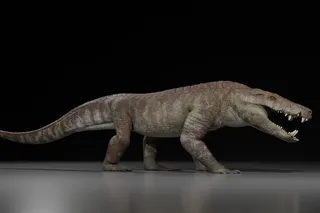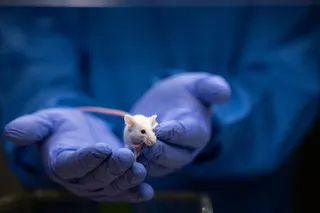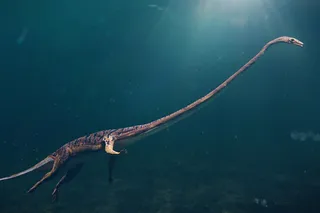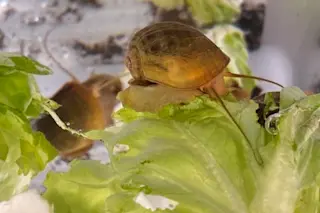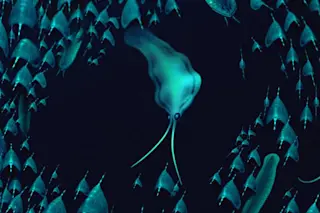Would-be superheros have a cause for celebration, as the ability to walk up walls just got a little closer. Researchers have developed a nanotech superglue modeled on the minute structures on gecko feet that allow the lizards to scamper up sheer surfaces. They say the new glue is three times stronger than previous gecko-inspired glues, and ten times stickier than the lizards themselves. The gecko owes its gravity-defying capacity to tiny structures that make use of the atomic-scale attractive van der Waals force.
Look close enough at a gecko foot and you will see an ordered, forest-like structure — roughly half a million fine hairs that each sprout into hundreds of even thinner, spatula-shaped tips. When these tips come into close contact with a surface they induce strong van der Waals forces that keep the foot anchored — that is, until the gecko decides to peel it off [Physics World].
The new glue, described in an article in Science [subscription required], uses specially aligned carbon nanotubes that mimic the design of those tiny gecko hairs. The researchers
grew arrays of vertically aligned carbon nanotubes topped with an unaligned layer of nanotubes, like rows of trees with branching tops. The adhesive force of these nanotube arrays is about 100 newtons per square centimeter--enough for a four-by-four-millimeter square of the material to hold up a 1,480-gram textbook. And its adhesive properties were the same when tested on very different surfaces, including glass plates, polymer films, and rough sandpaper [Technology Review].
Like gecko feet, a glue pad is also easy to remove--you simply pull it perpendicular from the surface, so that only the tips of the nanotubes are in contact with the surface, and it easily comes free. Researchers say the technology has plenty of real-world applications:
Aside from helping people walk up walls, the glue could be used in electrical components without the need for soldering.... And because it is dry, it could be used at very low temperatures as in space, where more conventional glues lose their grip [Reuters].
Related Content: 80beats: Nanotubes Could Provide the Key to Flexible Electronics 80beats: "Nanosponge" Could Soak Up Oil Spills DISCOVER: Glue Clues from Geckos Discoblog: Gecko + Mussel = Geckel, One Fine Adhesive DISCOVER: Gecko + Mussel = Geckel (video) Image: Science/AAAS




